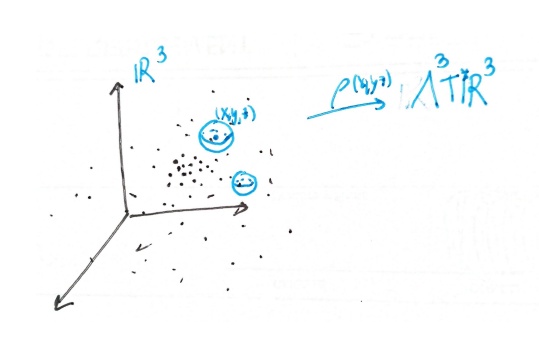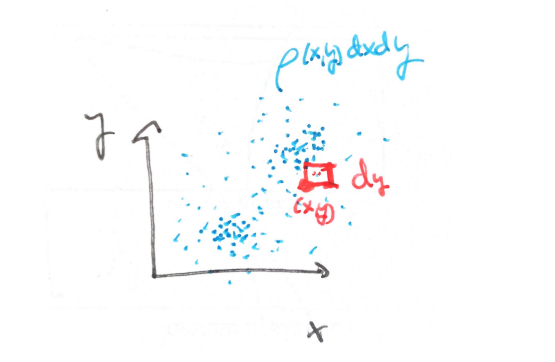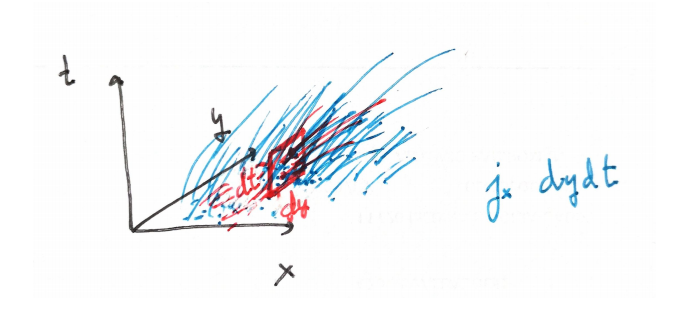Four-current
Related: this video.
CAVEAT: In what follows is not correct to use mass (in the sense of energy) when we go to relativistic context, since what is REAL in SR is the four-momentum, not the mass. All the reasoning below should be done with charges, instead of masses.
Electromagnetic effects happens because of the existence of moving particles with charge. We can imagine that we have infinite charged particles, and their movement being described by infinite curves. But this is not the optimal way to think of them.
First of all, recall that when we study a really large number of mass particles in Classical Mechanics is better to pass to Continuum Mechanics. This way, we substitute a huge number of positions by a distribution of mass density (a 3-form, if we are in 3D space). We count how many particles are in a infinitesimal cube centered at
that let us recover the mass which is enclosed by a volume

In what follows, we will work with two spatial dimensions, to get clearer pictures. So we have a mass density

(observe we have made our density depends on time, by the way).
But this is not the whole story. Because although we let 
and moving particles

So we must include three new quantities to code directions:

This points to the ideas of special relativity, which treats space and time on an equal footing. In fact, we can collect them all in a 4-vector
If we use charge instead of mass, we can perform the same analysis. In this case
If we assume that no charge can disappear from one place and appear into another without going through the wall of the laboratory (local charge conservation) we get the continuity equation
or also
For more info see The Theoretical Minimum vol 3, page 310 and so on.
Relation to four-momentum
The relationship between the four-current of a mass distribution representing a body
So four-current is a kind of "four-momentum density".
Example: a single electron
The current density
Here's the reasoning:
- Charge Density: The charge density
describes the amount of charge per unit volume at a given point in space and time. For a single point particle located at , the charge density is non-zero only at that specific location. We can represent this using the three-dimensional Dirac delta function:
- Relating Current Density to Charge Density and Velocity: The current density
is related to the charge density and the velocity of the charge carriers by the equation:
- Substituting and Combining: Substituting the expression for the charge density into the equation for the current density, we get: